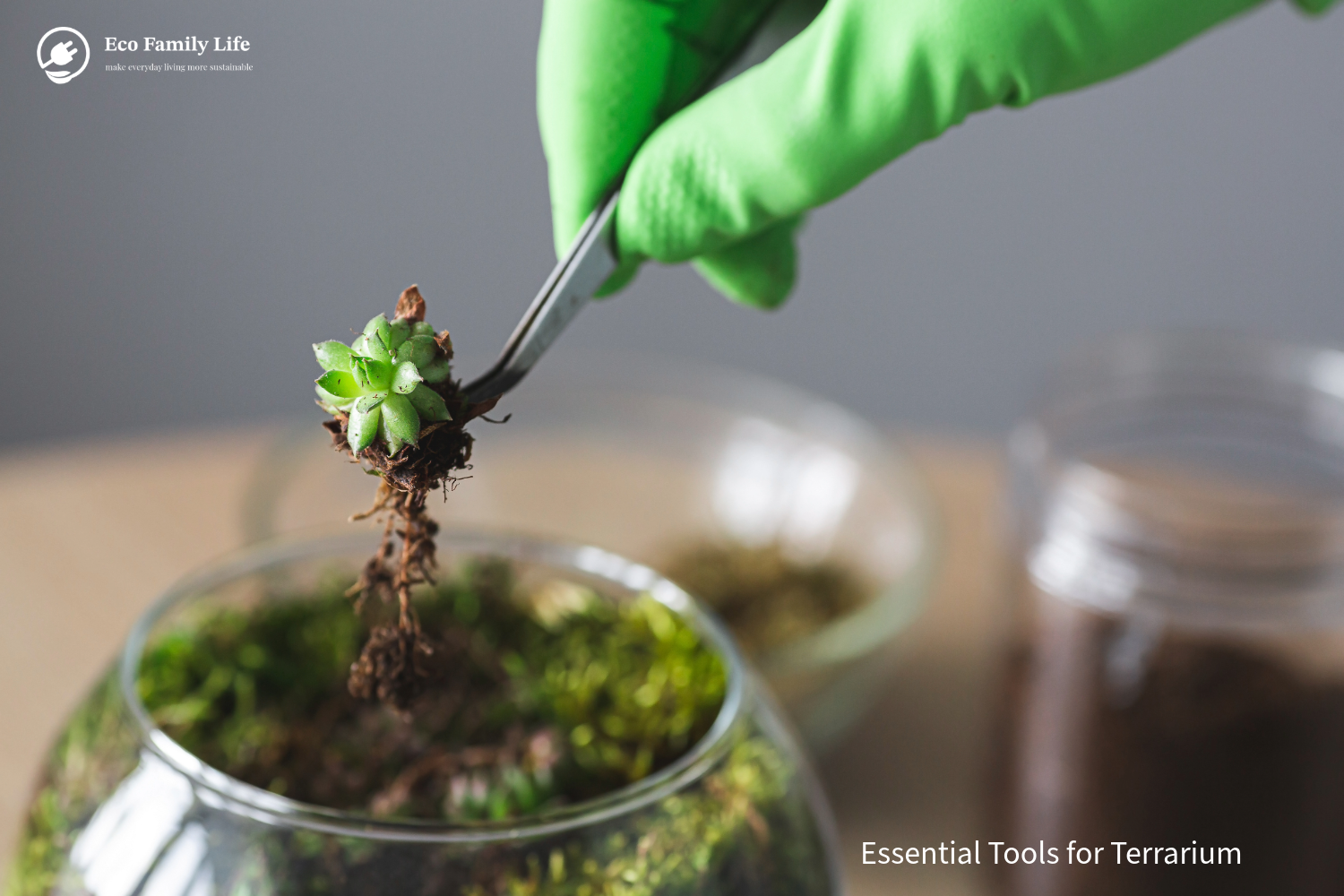Essential Tools for Creating Your Perfect Terrarium
Introduction: Why Terrariums?
Terrariums are a wonderful way to bring nature indoors, creating a beautiful, low-maintenance green space right in your home. Whether you're a seasoned plant lover or just starting, creating your own terrarium is a fun and rewarding project. But before you begin planting, there are a few essential tools you'll need to set up your terrarium properly and make sure your plants thrive. Here’s a beginner-friendly list of the must-have tools for creating your own indoor garden in a glass container.
1. Tweezers
Why You Need Them: Tweezers are incredibly useful when working with small plants and delicate materials. You’ll use them to position your plants carefully, place small decorative items like stones or figurines, and even for removing unwanted debris. A good pair of long, fine-tipped tweezers will give you precision and control as you build your terrarium.
Tip:Make sure to get stainless steel tweezers, as they won’t rust and are easy to clean.
2. Spray Bottle
Why You Need It: A spray bottle is essential for maintaining proper humidity levels in your terrarium. Most plants in terrariums thrive in a humid environment, and a gentle misting with water can help create the ideal microclimate. Spray the plants and the sides of the glass container every few days to keep the moisture level just right.
Tip:Look for a spray bottle with an adjustable nozzle for a fine mist.
3. Small Trowel or Shovel
Why You Need It: A small trowel or shovel is perfect for adding soil into your terrarium. These tools make it easy to create layers of soil, especially in a confined space. You'll need this tool to properly distribute the soil and ensure your plants' roots have enough room to grow.
Tip:Choose a tool with a narrow blade to help with precise soil placement, especially for smaller terrariums.
4. Long-Handled Spoon or Scoop
Why You Need It: When placing decorative elements like stones, pebbles, or charcoal, a long-handled spoon or scoop comes in handy. It helps you avoid disturbing your plants while adding the finishing touches to your terrarium. This tool ensures that you can layer your materials evenly and without making a mess.
Tip:A scoop with a curved edge will make scooping soil and decorative elements much easier.
5. Small Brush
Why You Need It: A small brush (such as a paintbrush) is perfect for cleaning the inside of the glass and keeping the edges tidy. It’s also useful for gently removing any soil or dirt from your plants' leaves. Regular cleaning helps to maintain the clarity of the glass and keeps your terrarium looking pristine.
Tip:A soft-bristled brush will prevent any damage to your delicate plants or glass surface.
6. Scissors or Pruning Shears
Why You Need Them: Terrarium plants will need occasional trimming to keep them healthy and looking neat. Scissors or small pruning shears are ideal for cutting back overgrown stems, dead leaves, or any plant material that is no longer needed. Pruning ensures that your plants continue to thrive in the confined space.
Tip:Look for scissors with a sharp edge that can make clean cuts without damaging your plants.
7. Gravel or Decorative Stones
Why You Need Them: Gravel or decorative stones are key for the drainage layer at the bottom of your terrarium. This layer helps prevent water from accumulating at the roots of your plants and promotes healthy root growth. You can also use them for aesthetic purposes, creating a beautiful, natural look.
Tip:Choose small gravel or stones that match the overall theme and aesthetic of your terrarium.
Ready to Create Your Terrarium
With these tools in hand, you’re now ready to start your terrarium project! These essential tools will help you create a healthy, beautiful, and well-organized terrarium that brings a bit of nature into your home. Don’t be afraid to get creative and experiment with different plants, stones, and accessories. Happy planting!








